The minimal processing of beef brisket, as covered here, brings out the best of the brisket’s three components: closely trimmed flat, closely trimmed point and selected fat trimmings. Besides briskets unique flavor, they are also normally free from any bone-fragments; that one would need to try and find during processing.
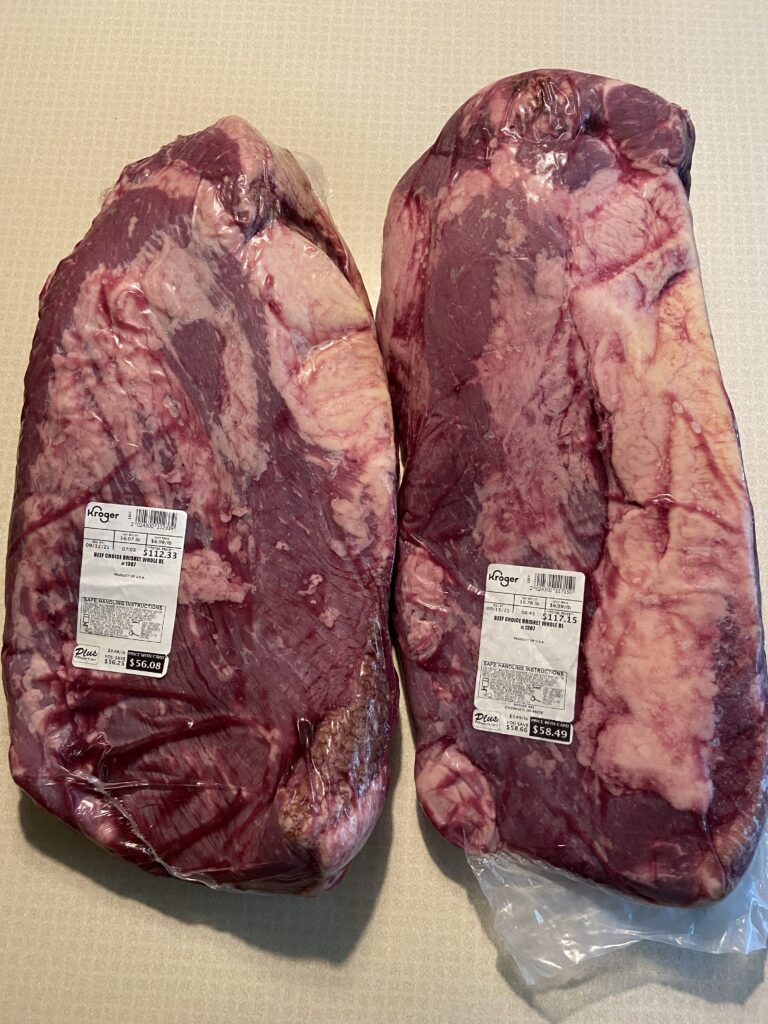
At $3.50 a pound, it’s wise to try and make the most that one can out of staring raw “packer” briskets. In order to make a desirable, economically worthwhile, value added end-product we need to take full advantage of the good attributes of each of the three separate brisket components.

The pictured brisket has an unusually high amount of deckle fat. I really should have passed it over for another one, but I was looking for the largest 2 briskets I could find. Deckle fat is hard compared to other brisket fat, and we don’t need all the fat that comes attached to packer briskets (they are about 1/3 trimmable fat). Whittle off a good bit of deckle fat first thing, then discard it.
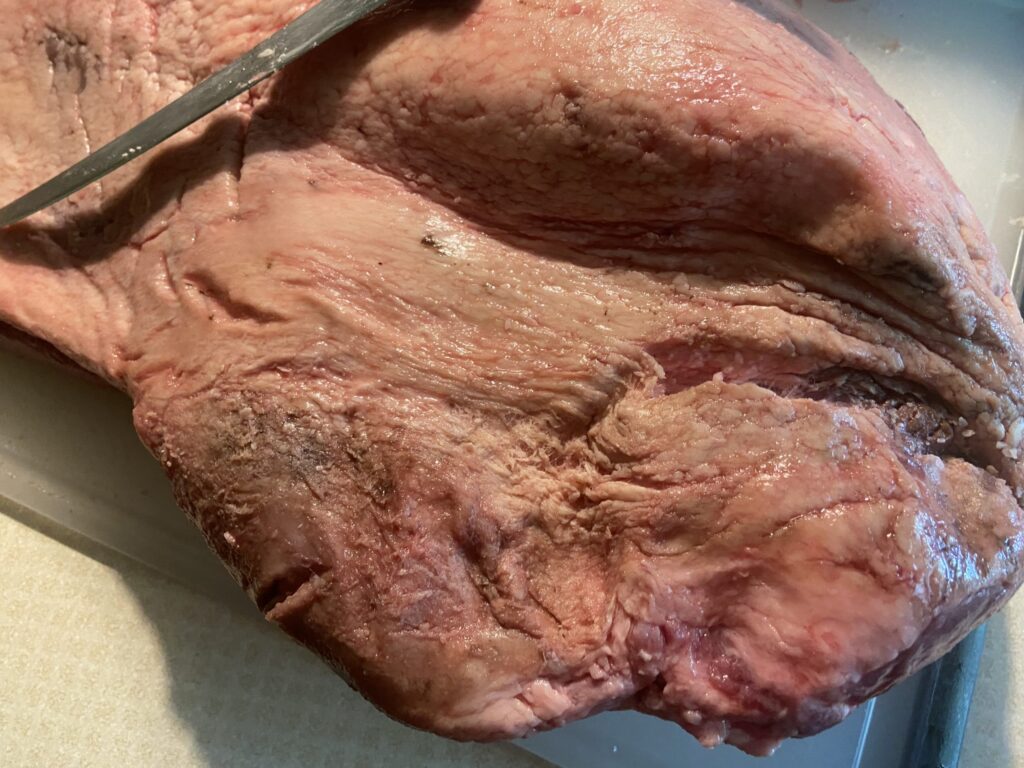
Pictured is the exterior of the anterior end of the brisket point cut. This area has a skin-like outside membrane that should be removed and thrown out.
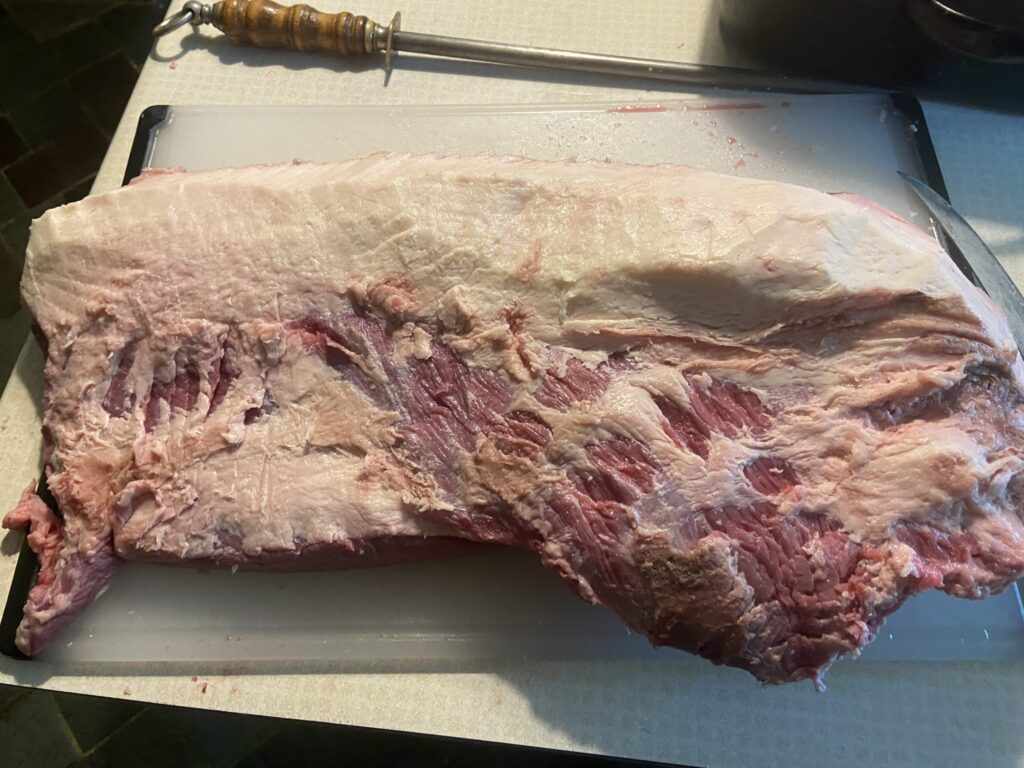
This is the same brisket after the objectionable material was removed and the exposed fat was freshened (surface trimmed)
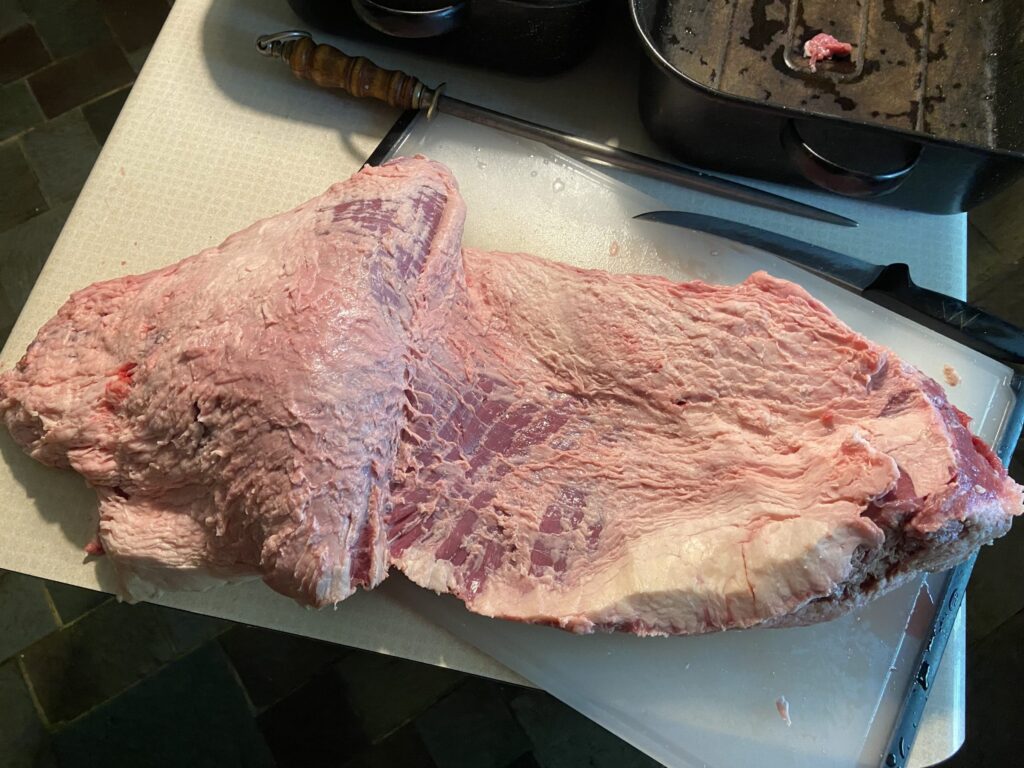
Here, whittled down deckle fat can be seen in the lower right of the picture. Follow the muscle seam fat to separate the flat from the point.
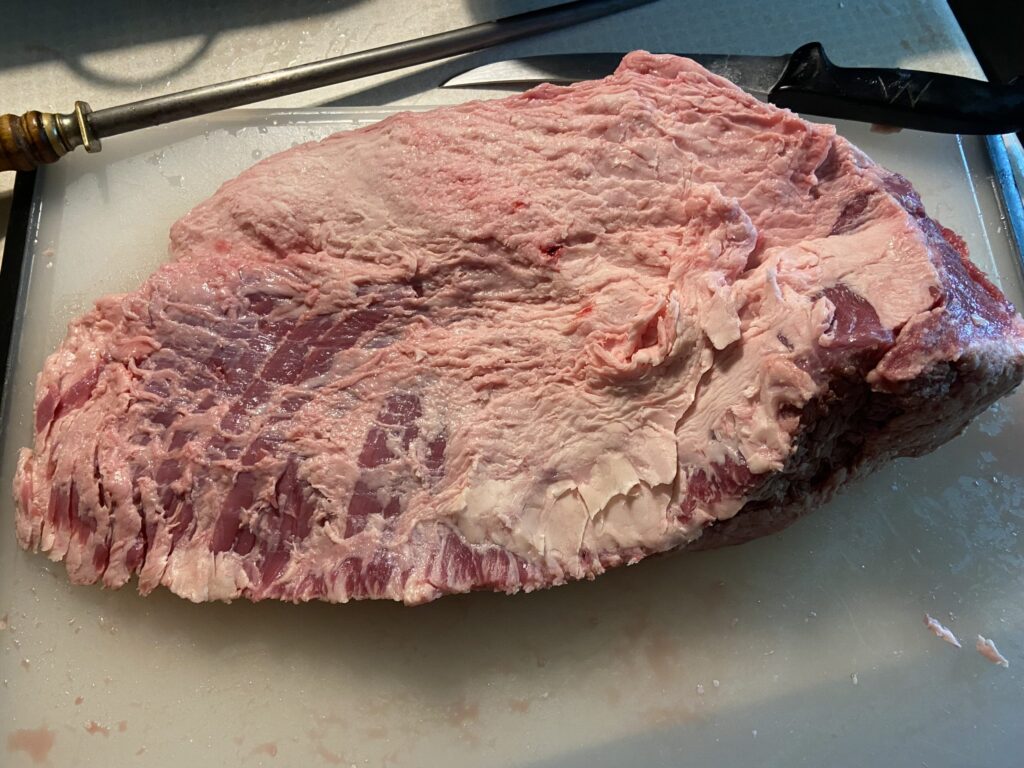
Separated point cut that has the deckle fat trimmed off.
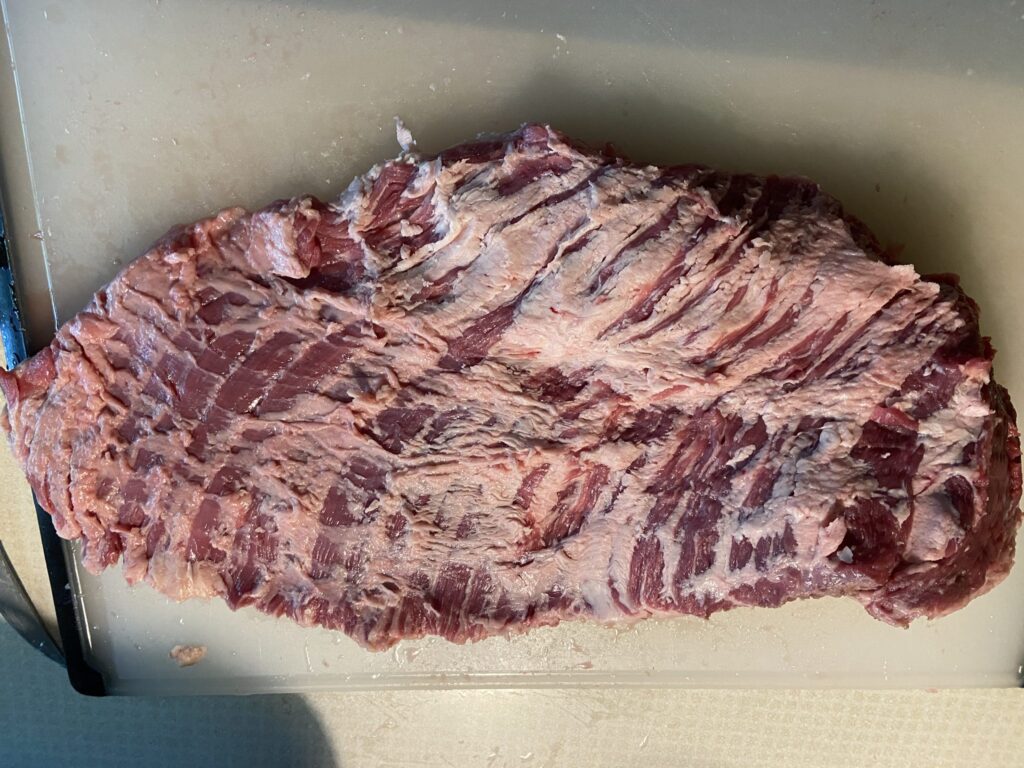
Closely trimmed interior side of a brisket point cut.

Closely trimmed exterior side of a brisket point cut. Slice the point into strips for grinding then set strips aside as a separate beef component.
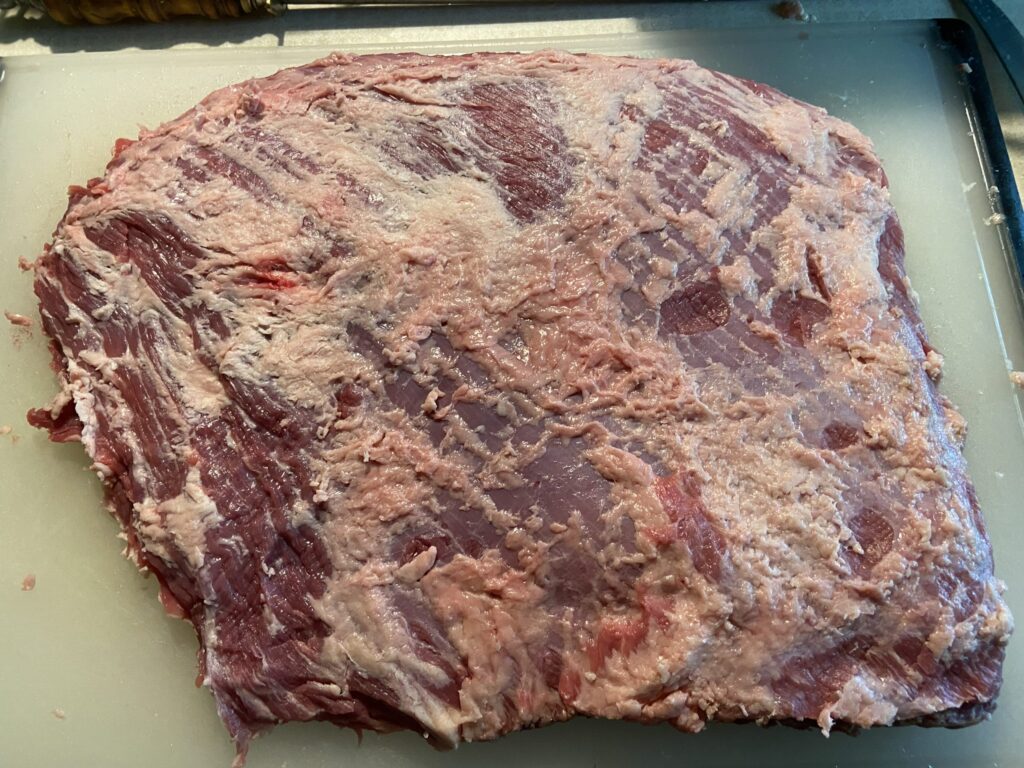
Closely trimmed brisket flat cut; on the side where the point was attached.
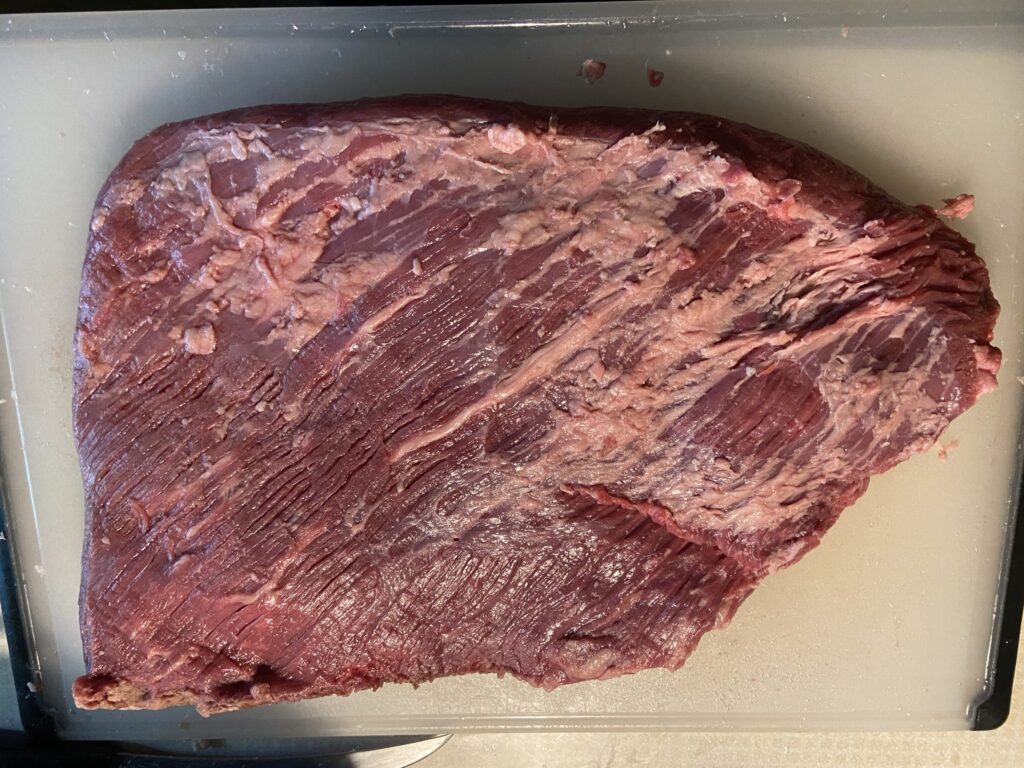
Medial side of a brisket flat. Cut trimmed flat into strips for grinding, and hold separate.
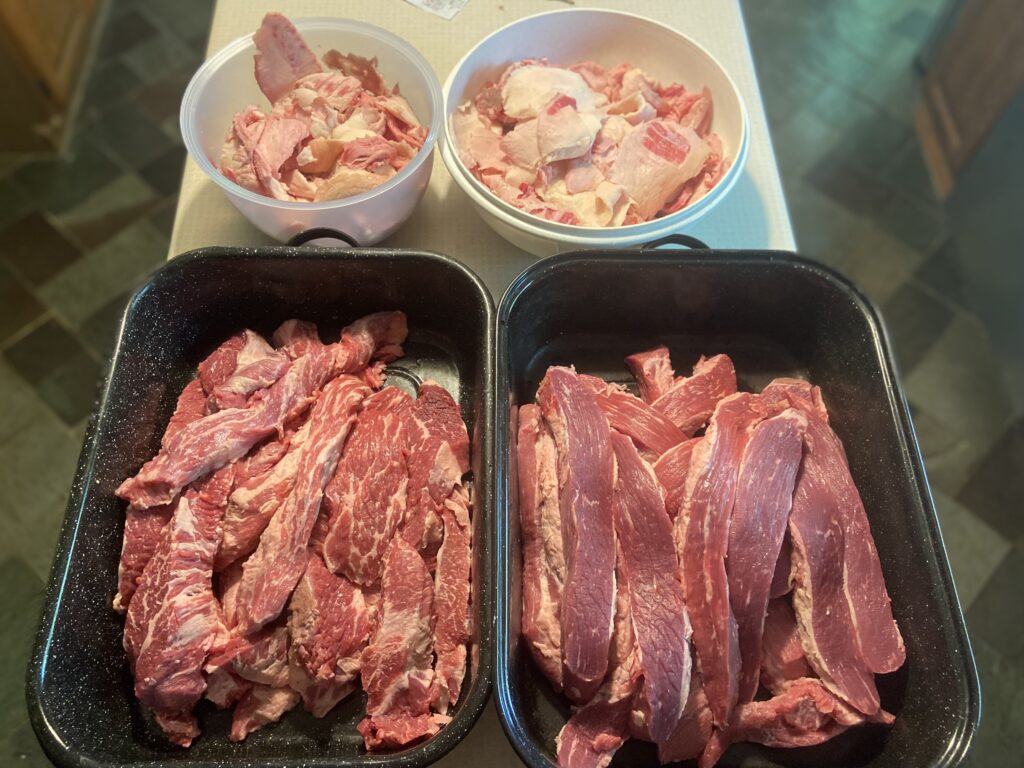
Top-left is trimming loss. Top-right is usable fat trimmings. Bottom-left is point cut strips. Bottom-right is flat cut strips. Trimming loss increased the cost of starting-raw used brisket from $3.50 per pound to $4.02 per pound. Fat trimmings were weighed; the brisket fat component worked out to be around 26%.
While the brisket components were re-chilling, non-meat batch component amounts were calculated and prepared. The meat-mix was composed of 28.5 brisket pounds, Seven 1/2 TBSP of flake salt, Two 1/3 TBSP of fine ground black pepper, 14 cloves of crushed garlic, Three 1/2 cups of water and Two 1/3 TBSP of sodium phosphate.
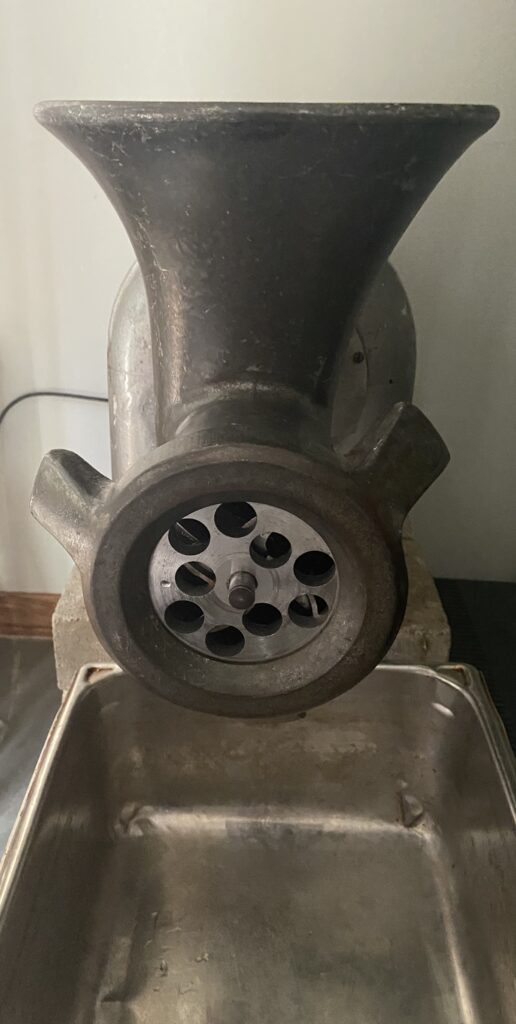
A 3/4″ hole size plate was used to grind the flat cut brisket component.
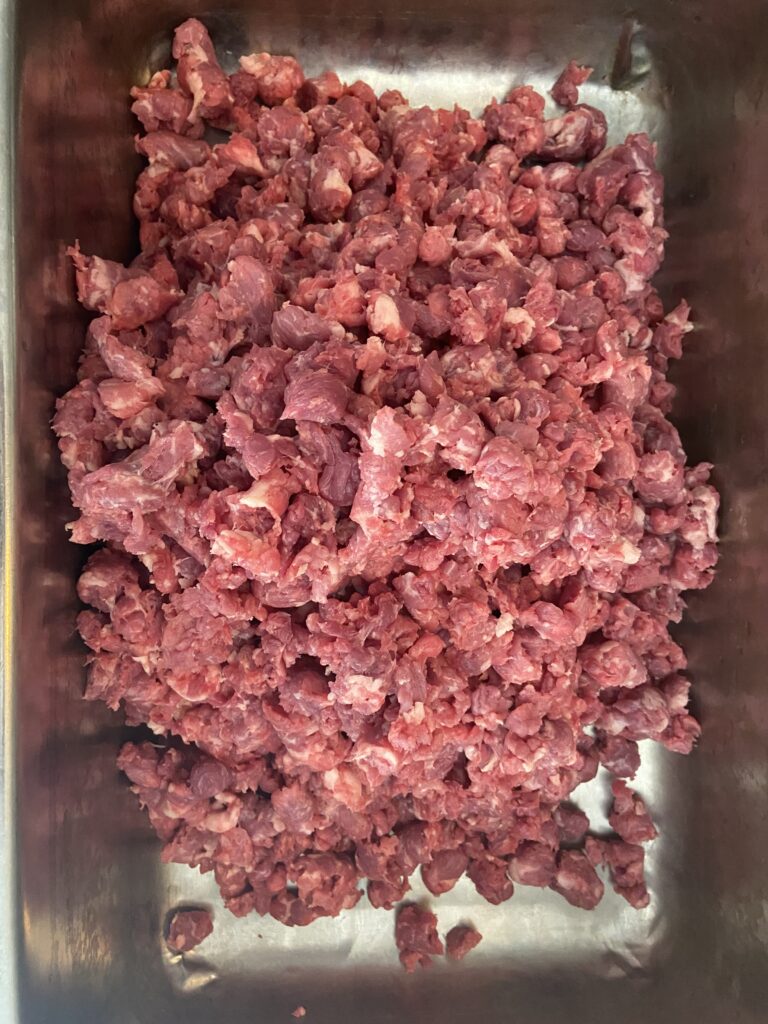
Flat after running it once through the 3/4″ grinded plate.
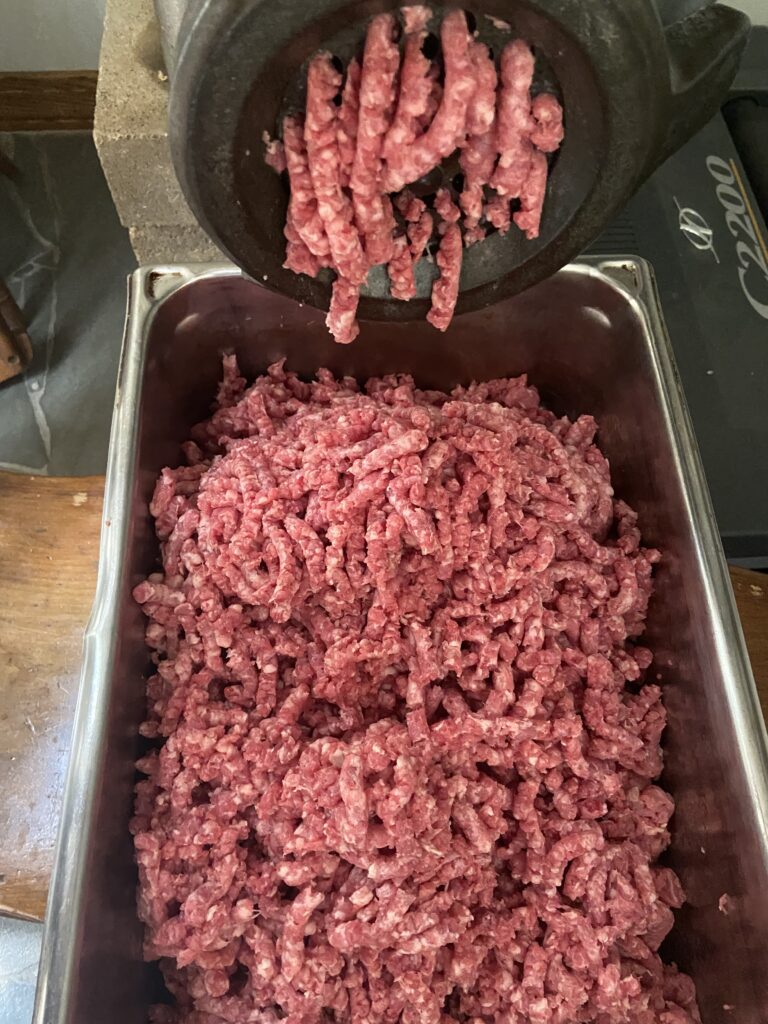
The point cut tends to be somewhat stringy; so it was sent twice through the 3/8″ plate.
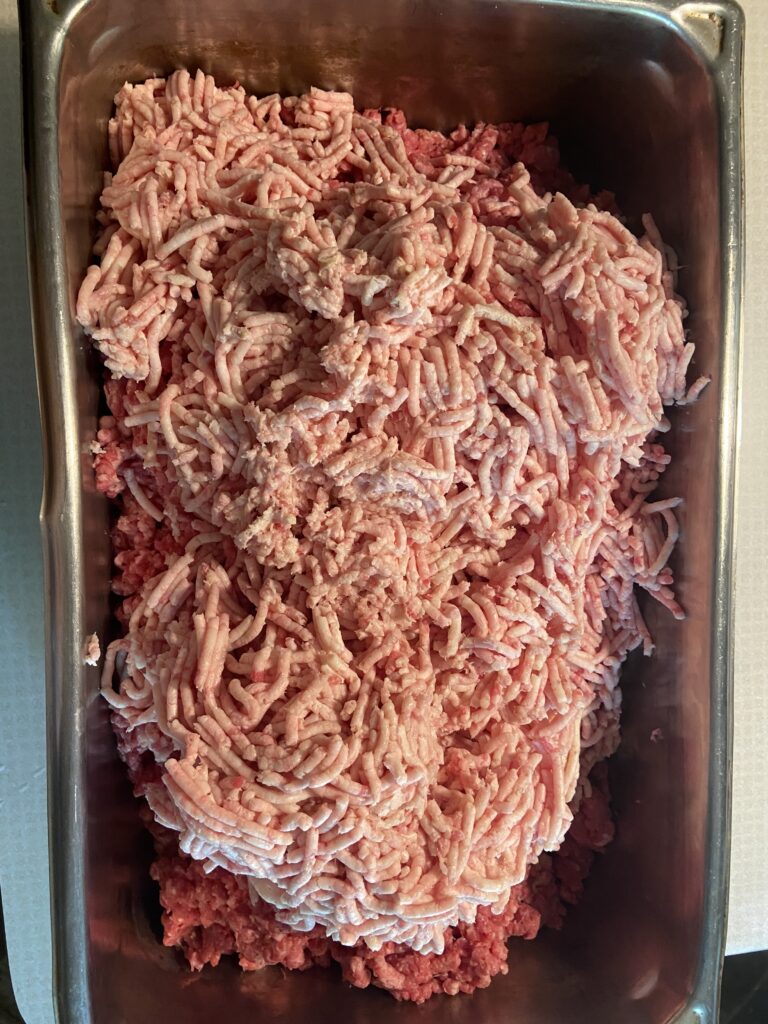
In order to preclude getting fat globs in the finished product, the fat component went once through a 3/16″ plate. Semi-fine grinding also help distribute fat more evenly throughout the batch; where it adds marbling-like palatability.
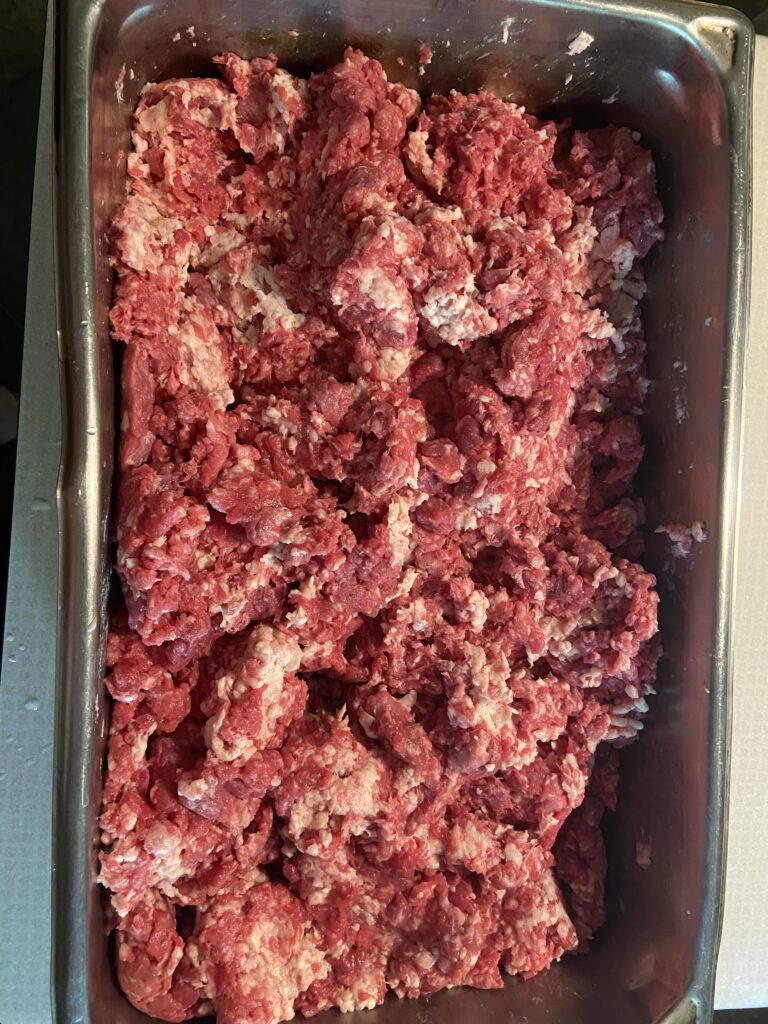
Use about a cup of the water to dissolve sodium phosphate, then lightly work it into the ground brisket.
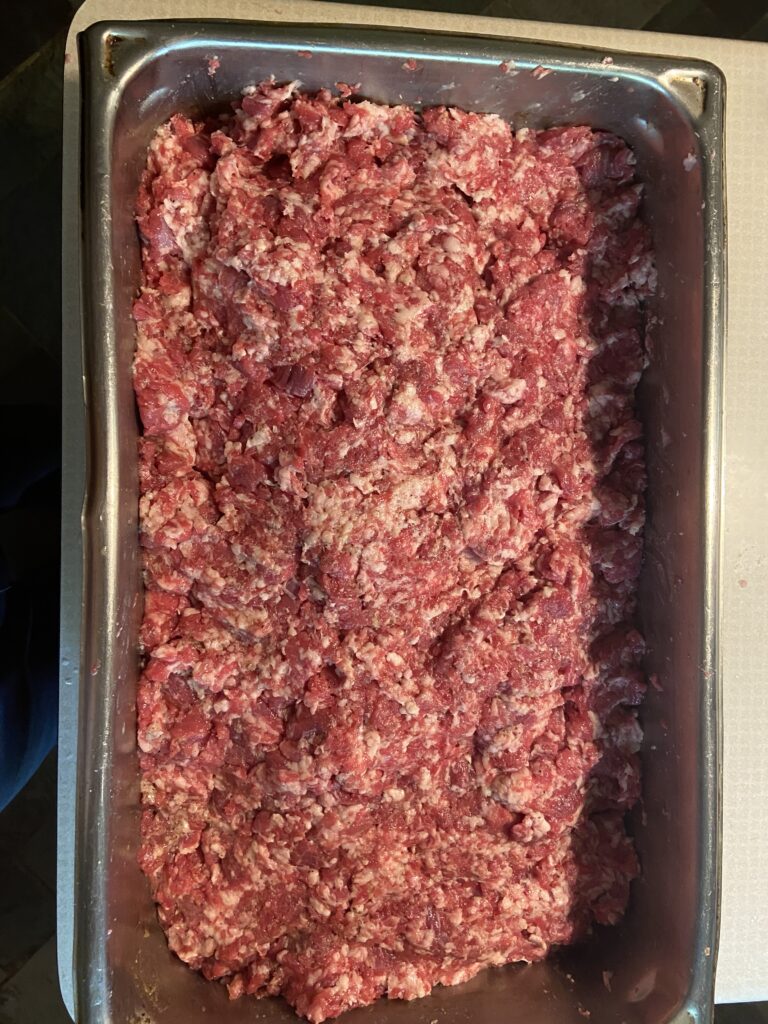
Dissolve seasonings in the remainder of the water and mix the batch well. Pull the batch out and mix it a couple times, while it sits covered in refrigeration overnight.
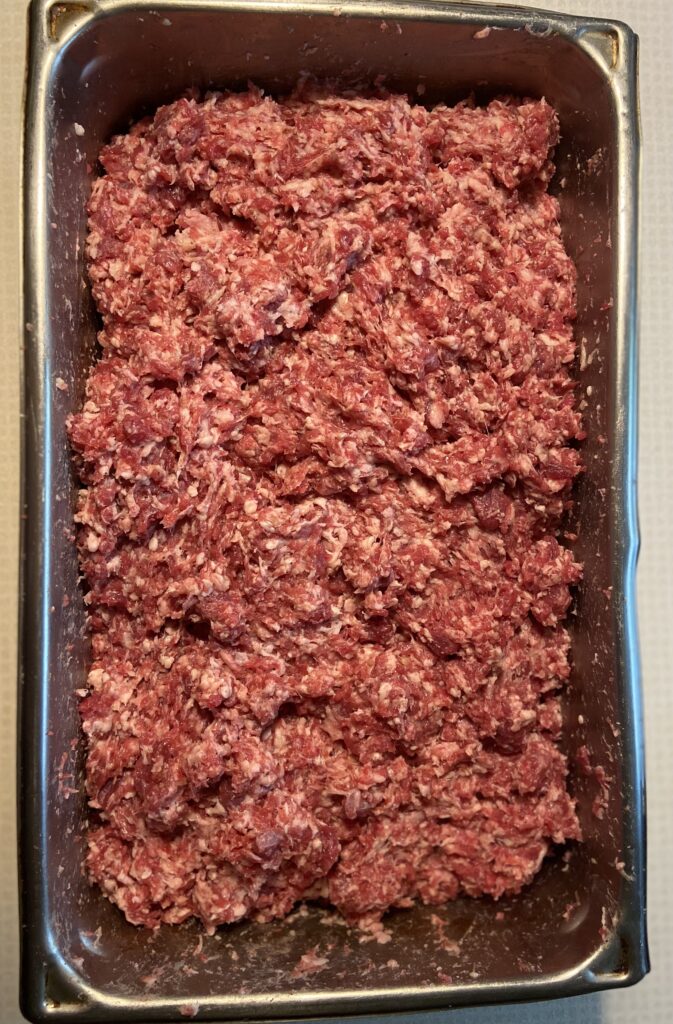
Fully mixed batch; displaying a lot of sticky salt-soluble protein extraction.
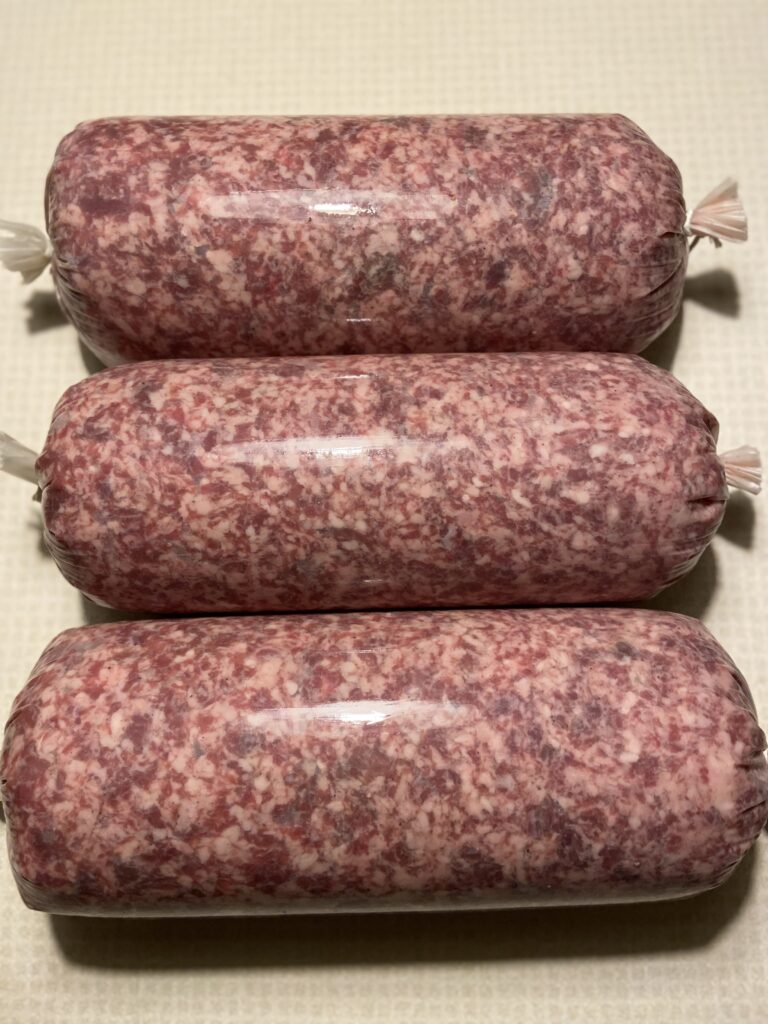
Hand-stuff 3 large fibrous casings. Fist the meat-mix tightly into the casings. Fibrous casings are semi-permeable to moisture and smoke.
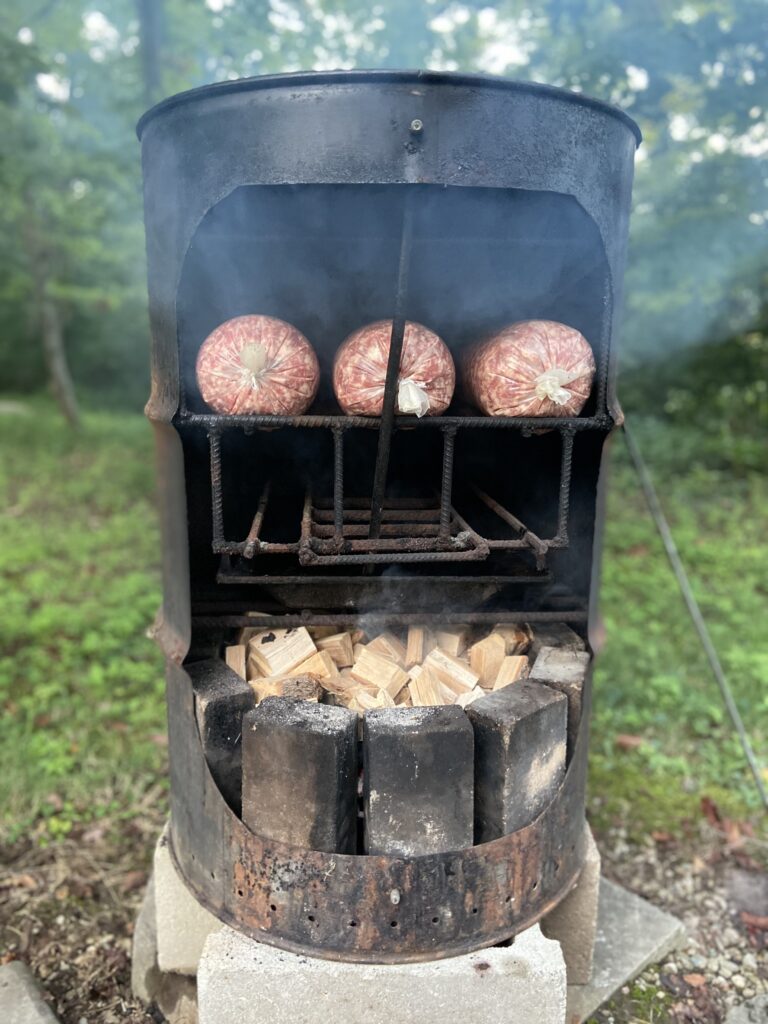
Drum smoker at start-up. Meat was hot-smoked for 6 hours before drum was opened. Both charcoal and the water pan can be resupplied without opening.
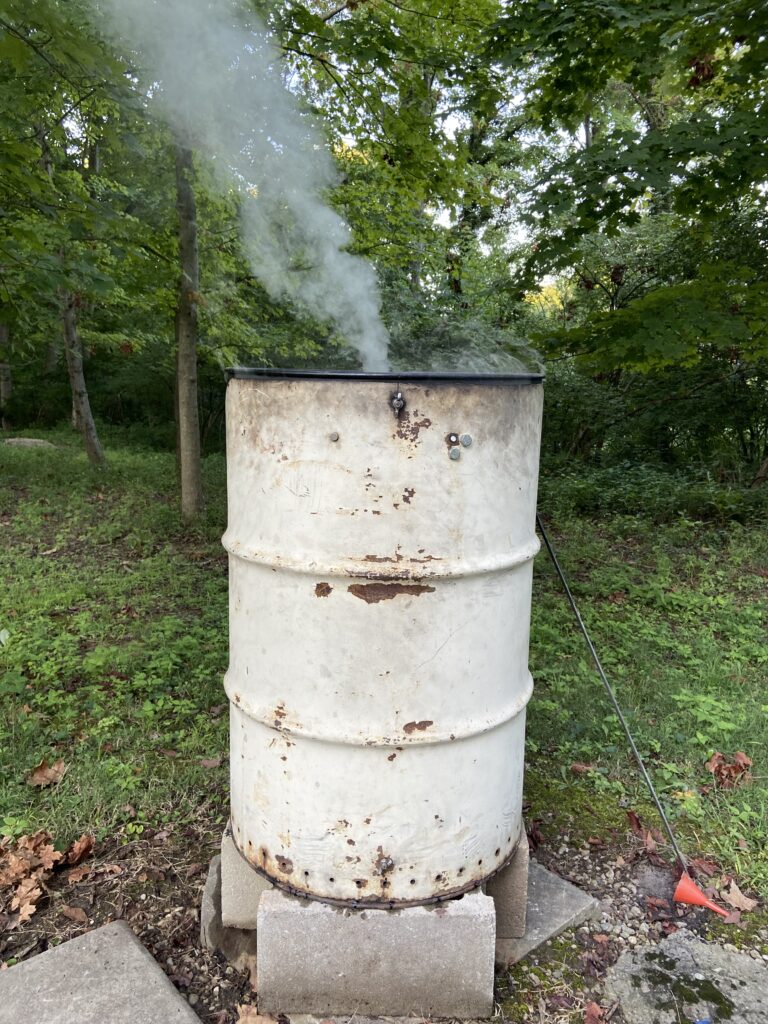
Smoker with shroud in place. Seasoned hard maple chunks were placed on top of charcoal chimney lit charcoal to supply both smoke and heat generation. No dampers are needed. The 17 front smoker holes do a good job of heat regulation.
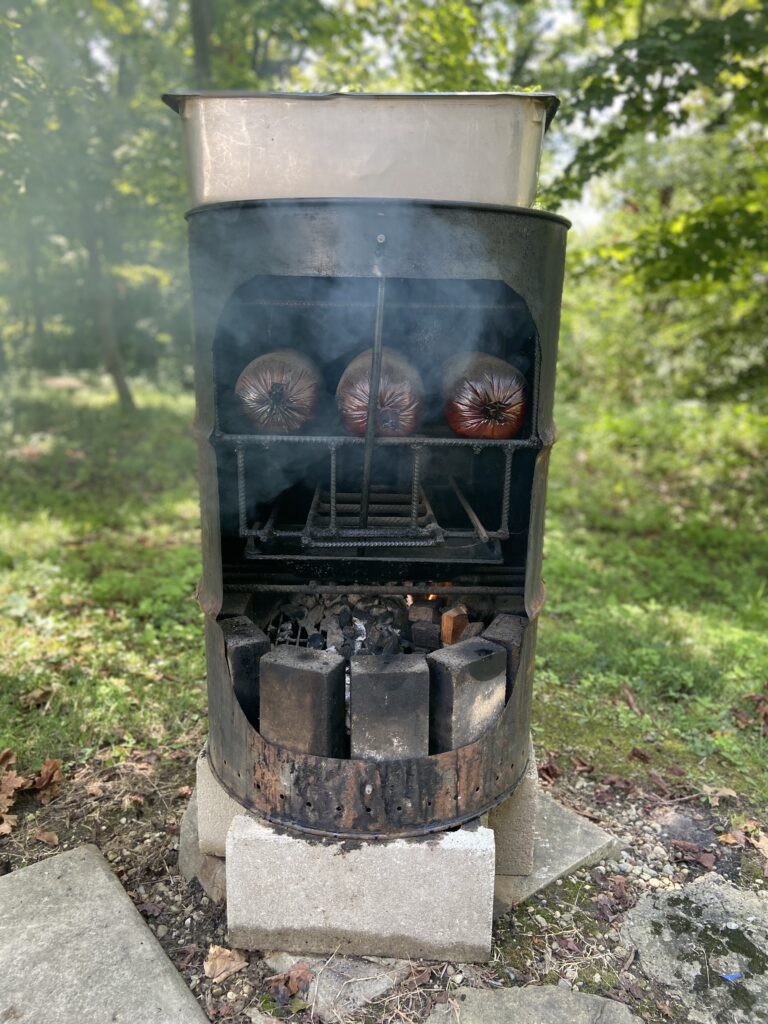
Chubs were pulled after 6 hours. They were then at 158F internal.
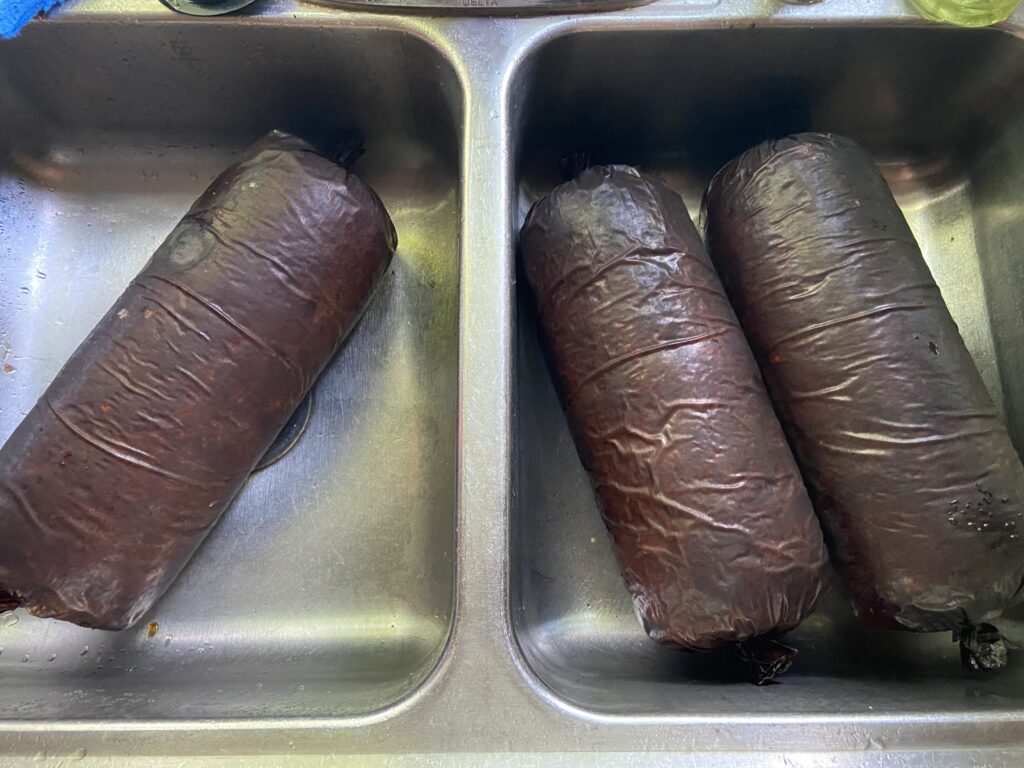
Soot was immediately rinsed off the chubs then the casings were striped. Stripping casings at this point is a good idea because the casings come off easy and product bind is already set.
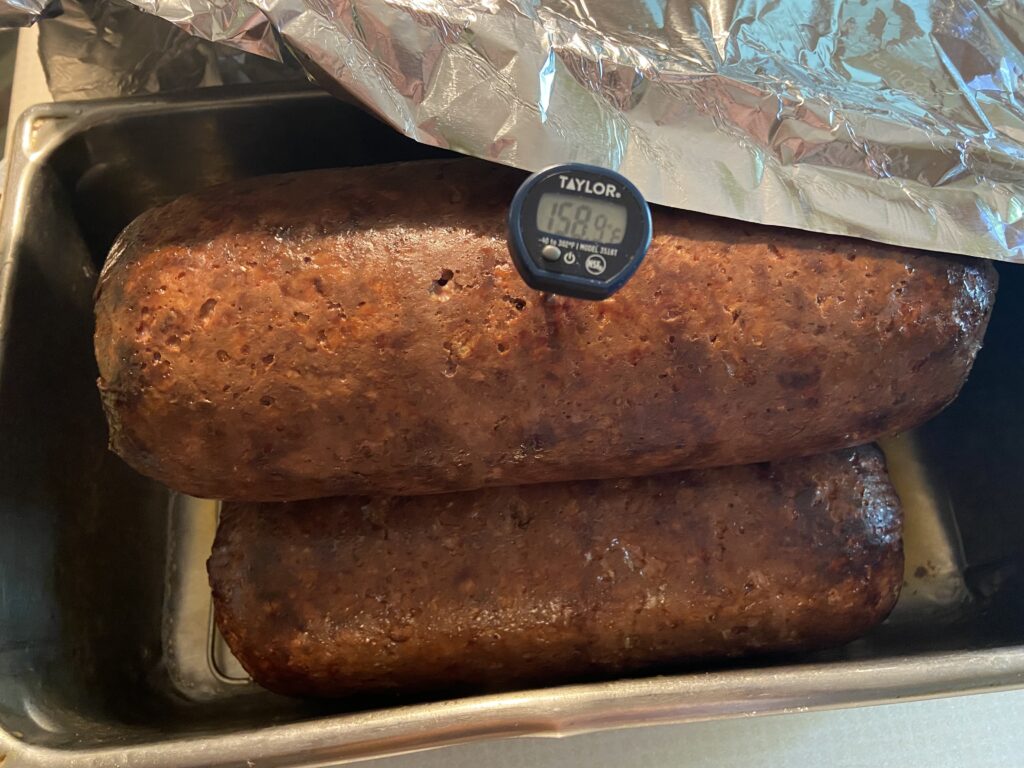
A little water was placed in a large steam table pan, a rack was added, chubs were stacked on the rack, the pan was tightly sealed with aluminum foil and the pan was placed in a 250F oven.
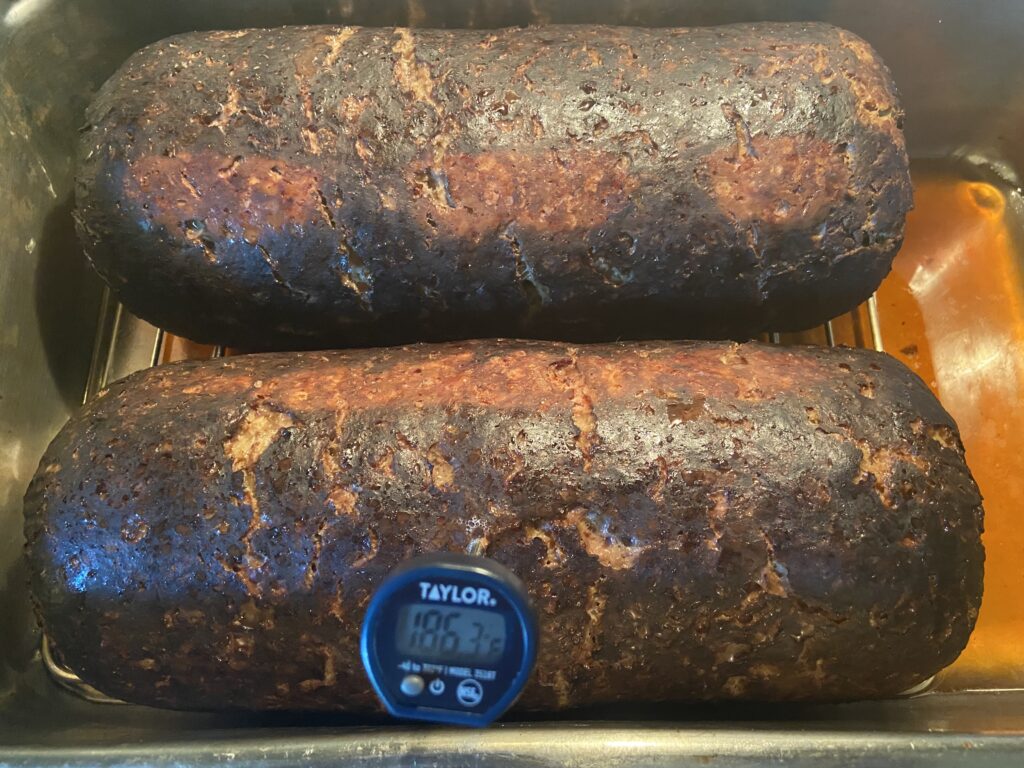
After 3 hours of steam-cooking the chubs were at 186F internal. They were pulled from the oven at that point and started cooling.
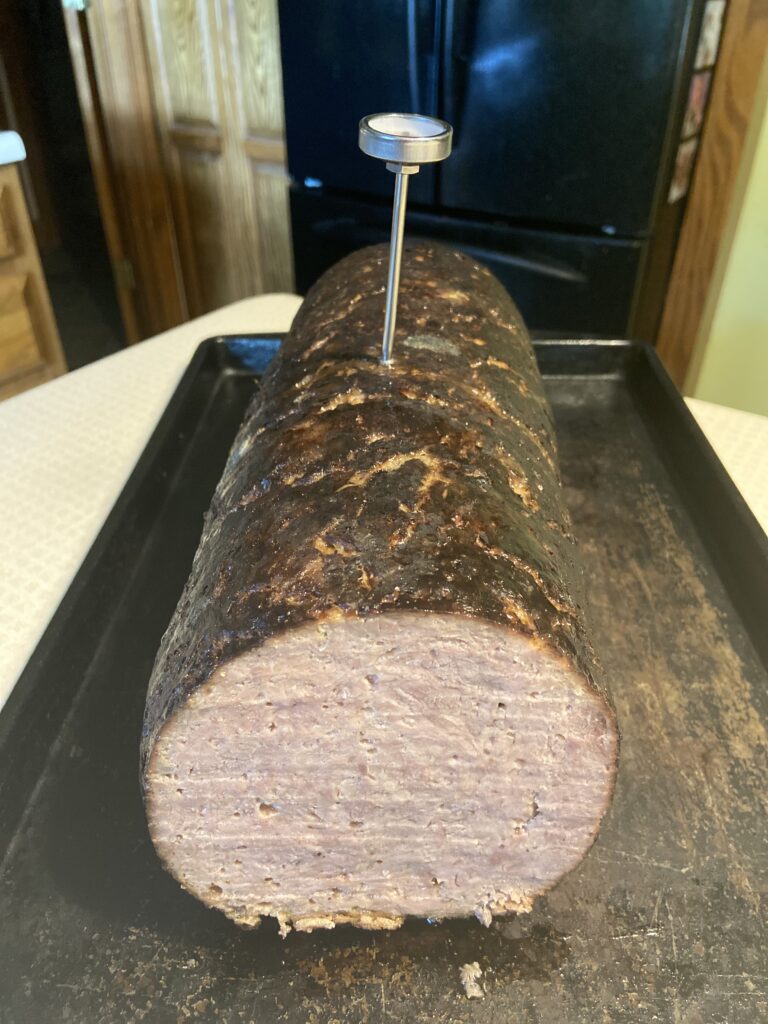
This chub was still warm, but I just had to try some of it.
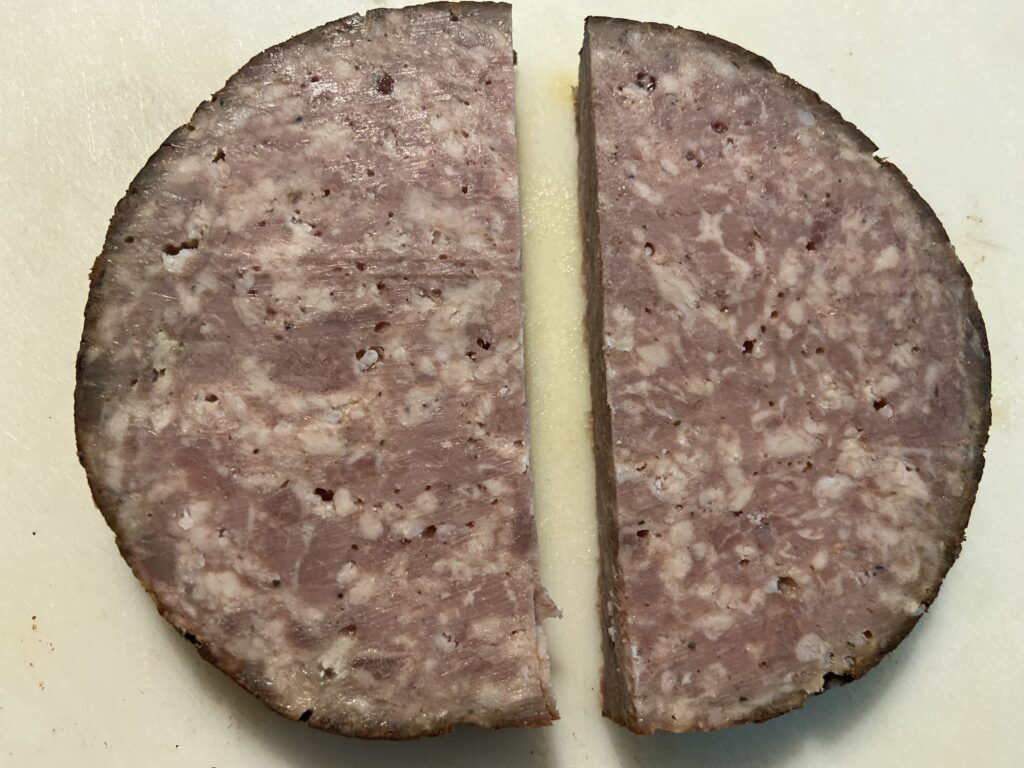
This fully chilled slice show the different brisket textures.
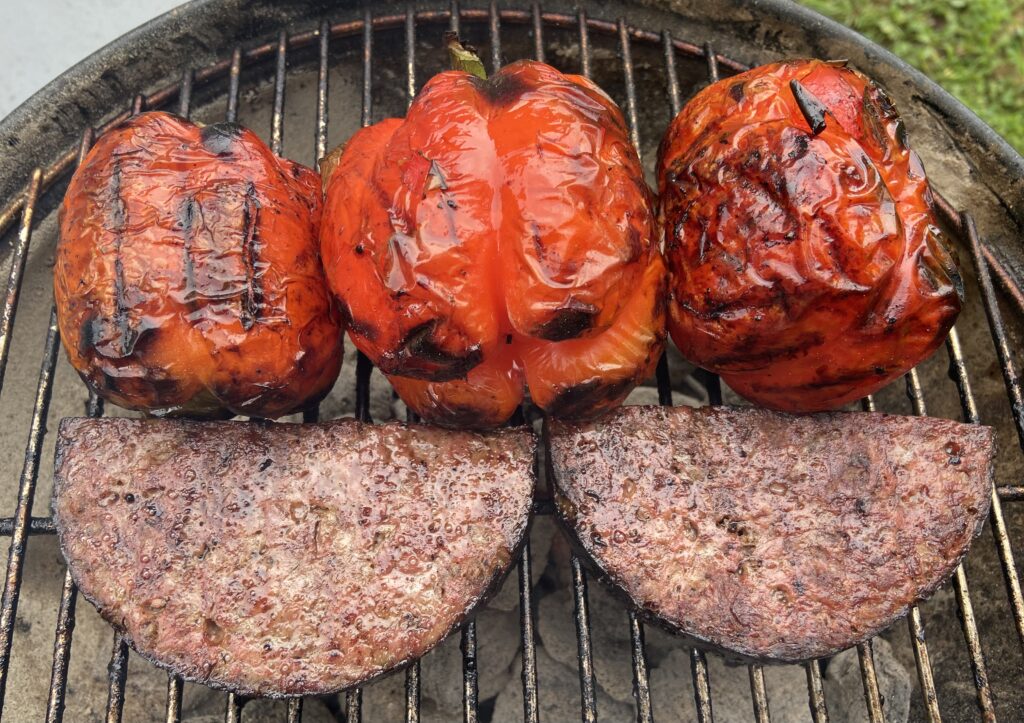
1/2 ” thick Half-moon brisket, browned on the grill for serving. They were excellent.
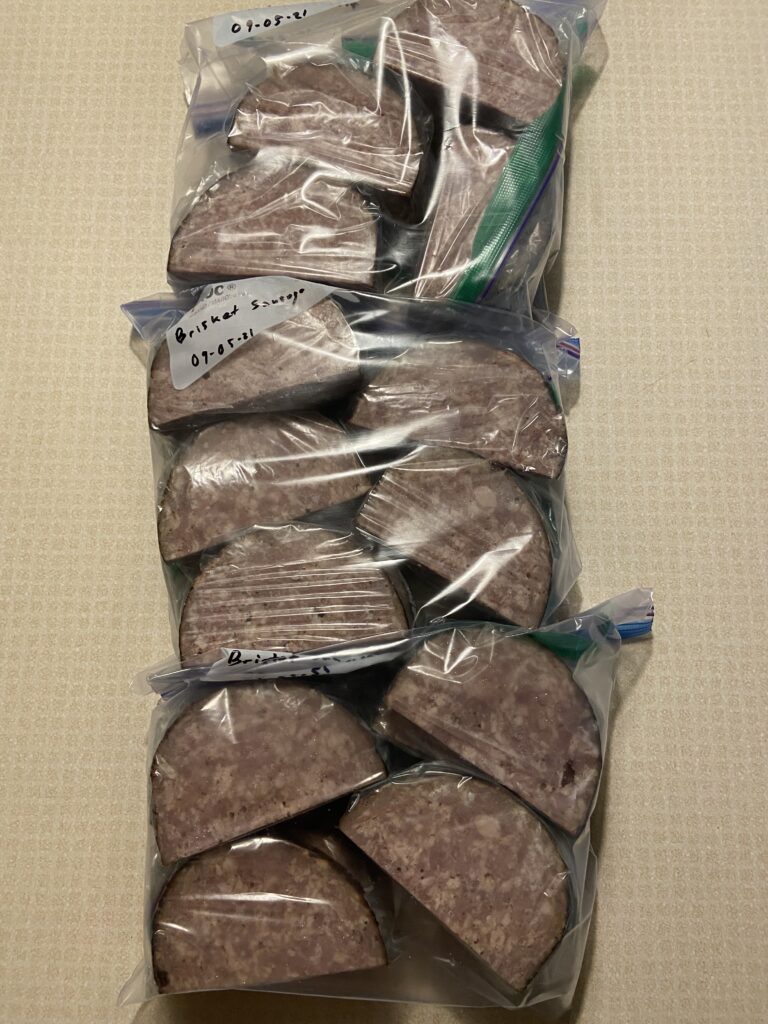
About half the batch went to a weekend party and the other half was packaged for freezer storage. Make you some.
